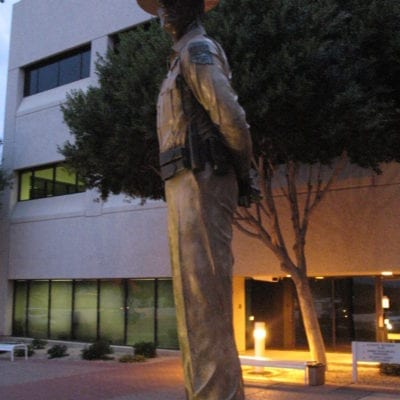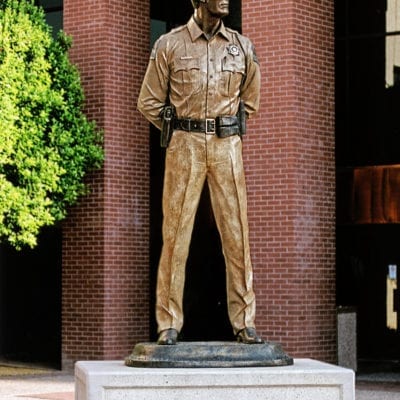Author: Val Van Brocklin
Editor’s note: Uniforms and armored vehicles aside, U.S. law enforcement has much it can learn from military-level training and tactics that could transform operations from a leadership, organizational, and officer safety standpoint. This series, “Military methodologies: Organizational and leadership lessons for LE,” looks at what lessons law enforcement should take from the military experience.
On our way through the 1980s, we went from the Industrial Age to the Information Age.
The Industrial Age rewarded efficient execution of known, repeatable processes at scale (think assembly line.) This favored a hierarchical “command and control” model in which leadership:
Was at the top and front-line workers were at the bottom; Relied on rank; Knew all the answers; Imposed discipline; Demanded respect; Limited and defined roles, policies, procedures, work units and tasks –people operated on a “need-to-know basis” and information trickled down the pyramid.
Our military has been an archetype of such leadership, but such leadership was also found in private industry.
However, the Information Age dramatically reshaped our operational environment to one that is more connected, quickly changing and unpredictable.
Four-star General Stanley McChrystal learned the hard way fighting Al Qaeda in Iraq that this changed environment had reached the battlefield and required a new kind of leadership. His experience offers lessons for law enforcement.
New environment demands new leadership
In his New York Times best-selling book, “Team of Teams: New Rules of Engagement for a Complex World,” General McChrystal describes going up against Al Qaeda in Iraq in 2004. Despite having a much more qualified force that was better trained with more weapons and support, this agile, dispersed, rapidly evolving enemy was kicking the U.S. Joint Special Operations Forces’ butt.
The General realized,
To win we had to change. Surprisingly, that change was less about tactics or new technology than it was about the internal architecture and culture of our force.
He concluded that the changing battlefield’s complexity and unpredictability favored adaptability and resilience (“learning how to reconfigure to confront the unknown”) over the traditional efficiencies of scale and power and reductionist command and control.
How to change from a command-centric pyramid to ‘trust & purpose imbued teams’
Relying on communication and influence rather than command and control edicts, General McChrystal fought to replace a tradition and culture of separate silos of information and “need-to-know” restraints with complete transparency, active information-sharing and decentralized decision-making.
The daily briefing
The General started by giving the daily ritual of the Operations and Intelligence briefing new significance:
First, he walked the walk – he always personally attended and never re-scheduled them.
Second, he changed them from the exclusive province of a few commanders and unit leaders to something any soldier in the Task Force could dial into from a secure laptop and he encouraged them to do so.
Third, he refrained from using the meeting to make decisions or indicate preferences. Instead, he focused it on sharing information – positive and negative. Again, he led by example. He started by sharing all news – the good and the bad. He was assiduously nonjudgmental about others’ news – neither verbally nor nonverbally expressing approval or disapproval. He did, however, express empathy for new ideas regardless of where they came from.
Even as Commander of the Task Force, General McChrystal didn’t have hire-and-fire authority over every leader he wanted to participate. So he made the meetings valuable by keeping them fast and filled with “can’t-miss” discussions. If someone had a four-minute slot, the “update” portion was limited to one minute. The rest was open-ended dialogue that created “a shared consciousness.” The units learned more about how their own projects fit in with the whole. And the updates had to be about the present day, as “No one wanted to hear what you’d done in the last war.”
Decision-making
To foster agile decision-making, General McChrystal delegated kill decisions to the forces closest to the action – so long as they were transparent in their decisions and actions and followed core operating principles and values. If they weren’t or didn’t, there was hell to pay.
Shared experiences
To achieve a fluid, team-like cooperation across the large joint forces, the General used embedding and liaison programs to create strong lateral ties between units and with partner organizations.
The importance of the right mindset
The biggest challenge to any operation is the leader’s mindset.
The traditional approach of the military, which worked in a World War II era, might be found in General Patton’s,
“Lead, follow, or get out of the way.”
General McChrystal says,
“A leader’s first responsibility is to the whole.”
What type of leader are you? In his book, General McChrystal chronicles his own struggle between leading as a chess master – controlling each move of the organization – and leading as a gardener – enabling rather than directing, creating and maintaining a thriving ecosystem for the organization to operate in. It wasn’t easy for him.
At first it felt awkward to delegate decisions to subordinates that were technically possible for me to make. If I could make a decision, shouldn’t I? Wasn’t that my job? It could feel and look like I was shirking my responsibilities, a damning indictment for any leader.
Policing attracts people of action – doers and fixers. But the best law enforcement leaders of today and the future, will direct their energy and drive into “leading through questions, influence, design, and the success and development of [their] people (as opposed to their own heroic actions).”
If you haven’t begun to change your leadership to meet the changed environment, pick up a spade. Your officers and community will thank you for it.






